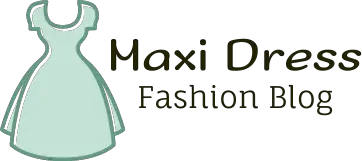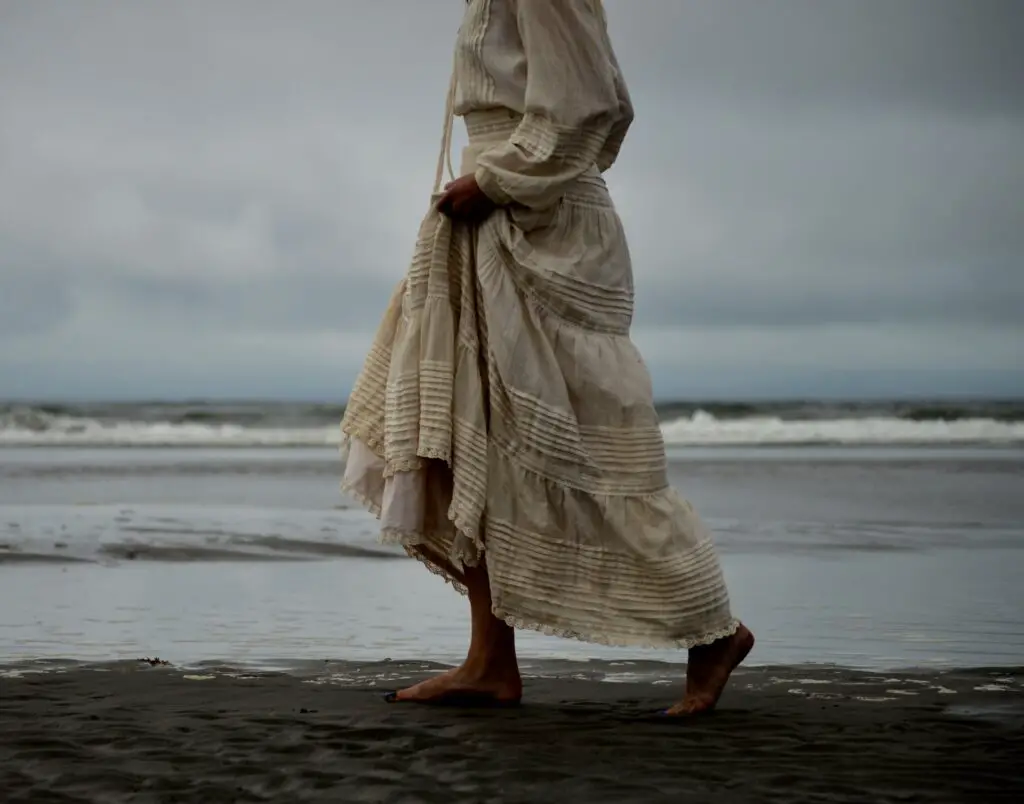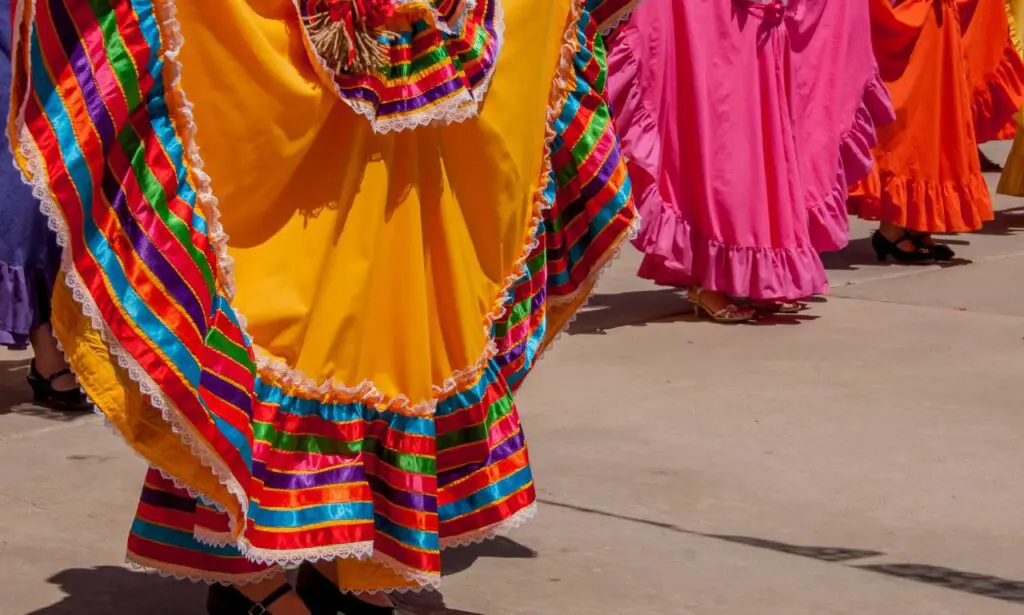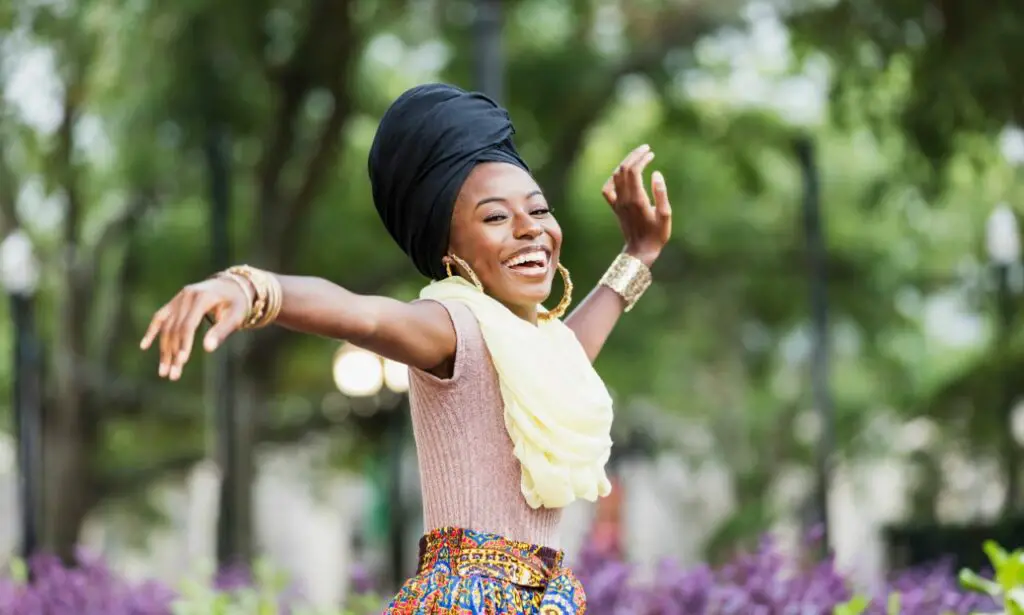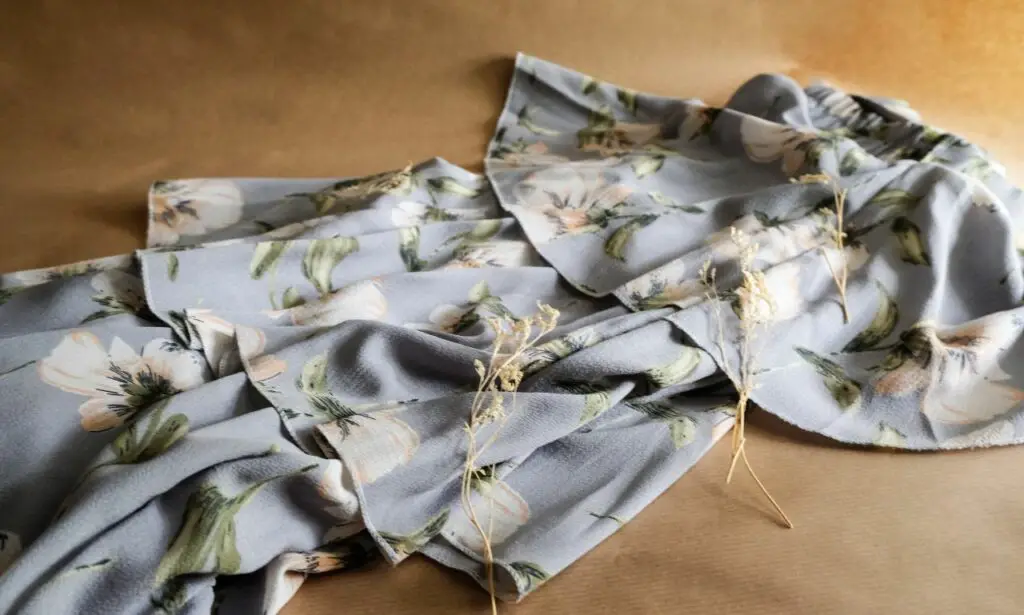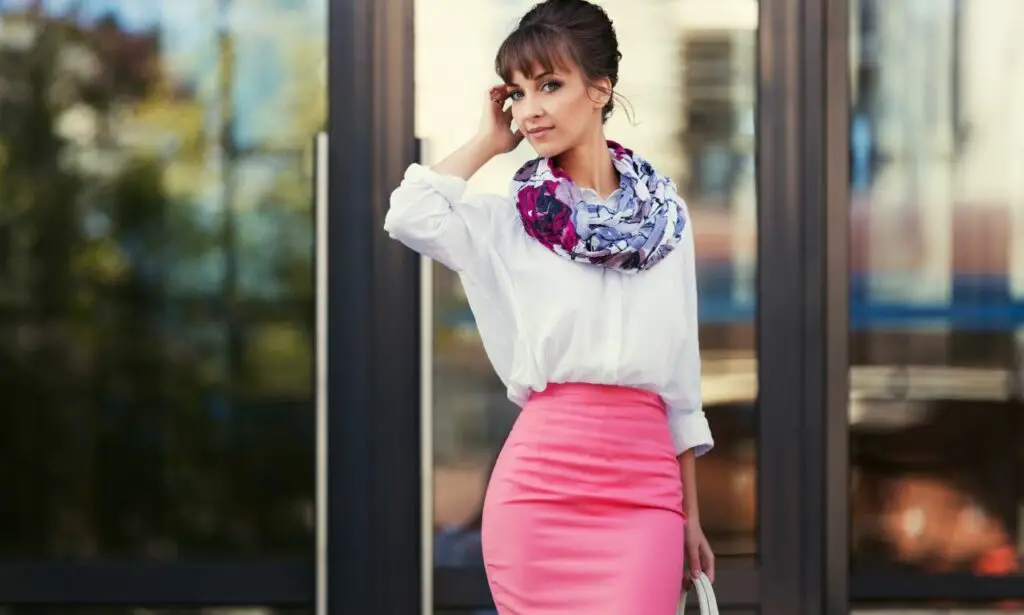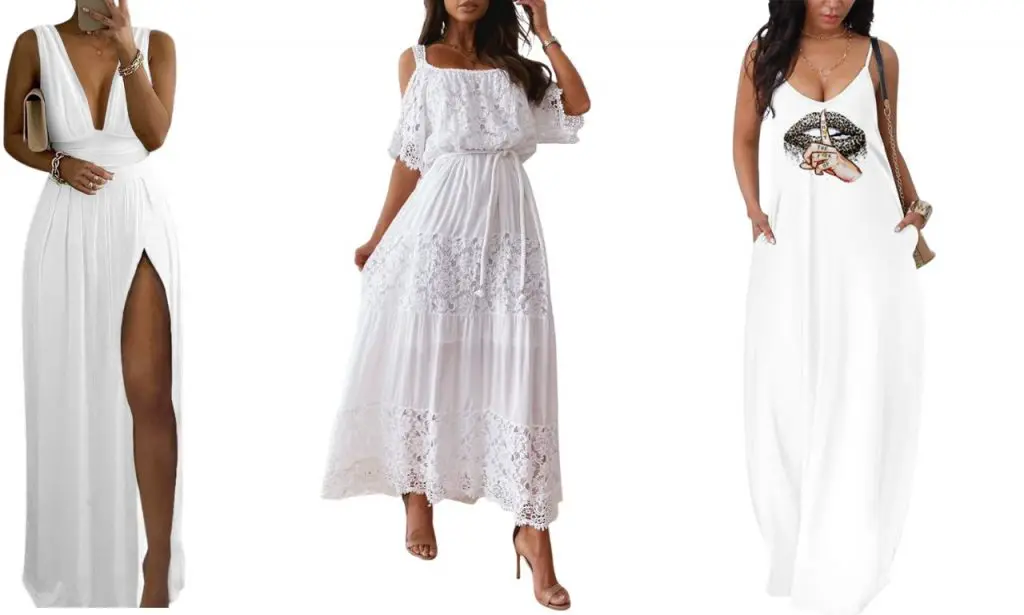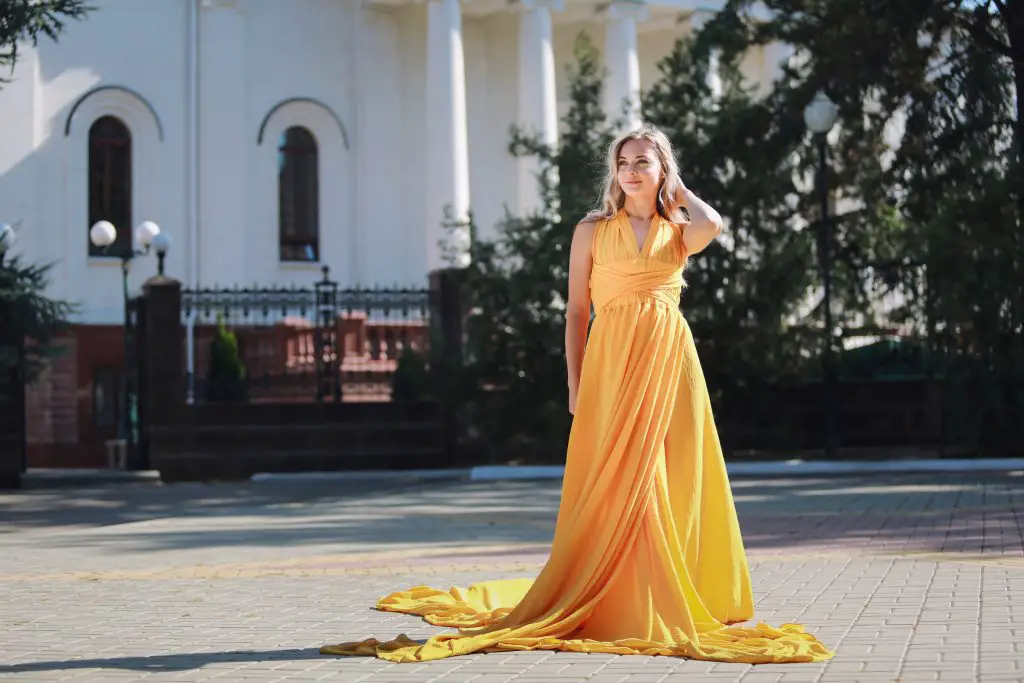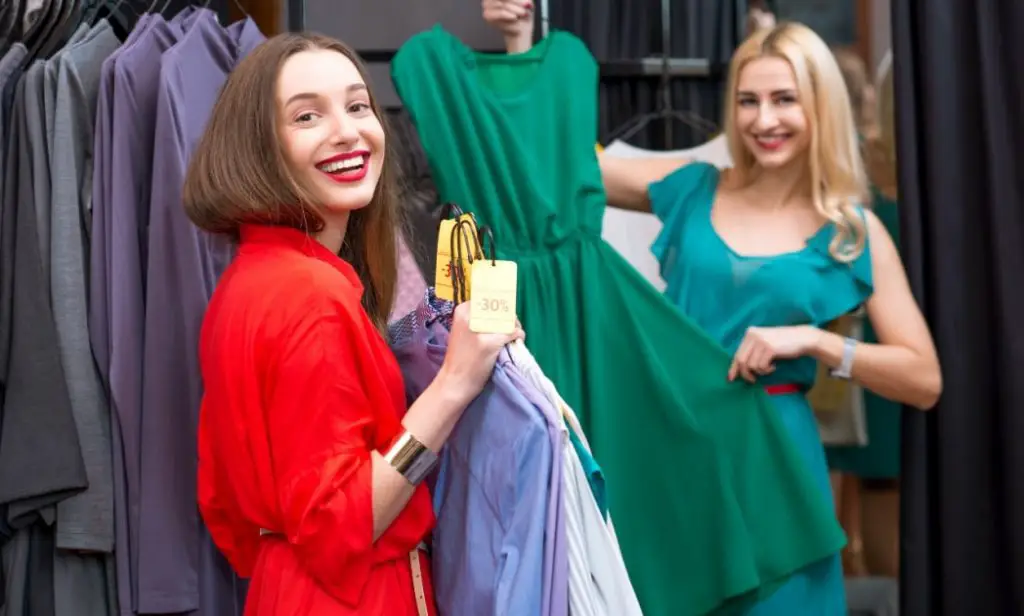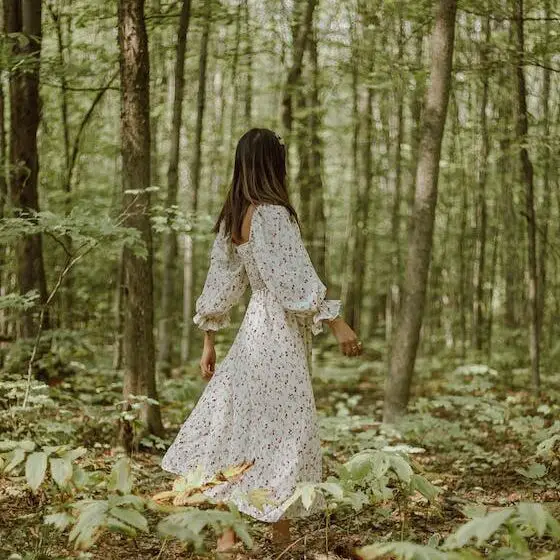A bonafide 1970s-style maxi dress will lend itself to the tailored yet relaxed silhouette with bold prints and bright colors that characterized the decade. The 70s were important years politically and economically, which had quite an influence on fashion. So to fully describe a 70s-style maxi, it is important to grasp the emergence and evolution of 1970s fashion, especially for women.
A Brief History of 1970s Women’s Fashion
Commonly known as the ‘Polyester Decade’, the 1970s saw the start of what we now call fast fashion. The presence of new synthetic fabrics like satin, sequin, velvet, and polyester made clothing affordable for everyone. However, many clothes were still handmade, allowing for the time’s eccentric/individual expressions, like adding patchwork, crotchet, embroidery, or beading to an outfit. All the handmade items and embroidery were a rejection of mainstream fashion, reflecting the overall rebellion against authority and mainstream ideas that characterized the 1970s.
As with modern-day fashion, 1970s women’s fashion looked to the past for inspiration. Designers borrowed heavily from the 1930s, 40s, and 50s, particularly with daytime outfits. Floral patterns reminiscent of the 1930s were very popular on women’s dresses, and designs like shirt dresses from the 50s made a comeback in new fabrics like suede. However, perhaps the most revolutionary item in women’s fashion was the versatile and still-fashionable wrap dress created by Diane von Füsternberg.
The ‘Polyester Decade’ may arguably have been the most colorful for fashion. Most homes now had color televisions allowing viewers to better appreciate the vibrant outfits on their favorite celebrities. It may have been life imitating art or art imitating life, but the ability to see more color on screens inspired women to wear the same vibrant colors and bold prints.
Another important aspect of women’s dresses at the time was their lengths. While the 1960s raised the hemline, the 70s brought it down to the floor. Women still wore minis, but long, maxi dresses made a significant return to the fashion scene. Maxi dresses matched the era’s neo-feminism and hippie movements that emboldened and elevated a woman’s status in society by re-imagining goddesses of ancient religions.
1970s Style Maxi Dress
Hippie women mostly wore the floor-skimming maxi dresses of the 1970s. In the face of anti-war sentiment, pacifism, and the entry of Eastern religions, more young women were embracing a peace and love ideology. As such, there was this carefree attitude towards clothing and an interest in returning to all things natural, which they demonstrated by wearing flowy, free maxi dresses of the 70s. It was also a time of self-expression shown in the embroidery on the dresses, jewelry, accessories, and the colors and prints such as tie-dye, floral, or paisley.
There were many kinds of maxi dresses in the 1970s, and we will take a look at a few of them:
1. Halter-Neck Maxis
These were the definition of the 1970s hippie chic. In seeking liberation, many women had stopped wearing their bras, making the halter-neck maxi all the easier to wear. They often came with a plunging back, perhaps to express more freedom. The dress fabric was usually soft, feminine, and free-flowing, and the hemline was sometimes uneven to enhance that floaty look.
2. Classic Romantic Dresses
1970s maxis borrowed heavily from the past, as some went as far back as Edwardian times. These classic romantic dresses feature high necklines, full sleeves with deep cuffs, and a little ruffle near the hemline. They would have fitted waists and used natural cotton or pinwale corduroy fabrics.
3. Victorian Pinafore Inspirations
Borrowing from Victorian times, another 70s-style maxi dress looked like a pinafore or smock. One option was to have a square neckline and flared sleeves that mimic a pinafore. Alternatively, there were long-sleeved, high-neck maxi dresses with ruffles on the neckline and running down the shoulders, along the bodice, and to the waist. These gave the appearance of a combined blouse and pinafore.
4. Plunging Necklines With Long Billowy Sleeves
This was another classic 1970s-style maxi dress design that was quite popular. Women wanted freedom, and one way was to discard brassieres. The plunging necklines were a way to show off that freedom and look beautiful. The dress fabric was soft and flowy, with sheer lace sleeves sometimes. This dress style was the picture of femininity with a fitted waist and light colors or floral patterns.
5. Crochet Maxis
An important element of the 70s was using individual creativity to create unique handmade items. As such, certain designers created crochet maxi dresses. Some women would wear crochet dresses as they were, while others wore them to function like beach coverups. These may not have been the best fabric for maxi dresses, but they certainly looked gorgeous.
6. Prairie-Style Dresses
Prairie-style 1970s maxi dresses borrowed from dresses women wore in the 1900s. They are simple, long, flowing dresses featuring lace details along the bodice, skirt, and hemline. These probably appealed to the women of the 70s because they could express their creativity in how and where to place the lace.
7. Caftan Dresses
With the increased interest in the Eastern world, certain bits of international maxi dress fashion crossed over, like the caftan dresses. Originally from the Middle East, the caftan or abaya was re-imagined in the 1970s to create a look that suited more towards older women. While the long flowing sleeves remained, designers often modified the waist and bodice to include a belt and a v-neckline to make it more Western.
8. Grecian Goddess Maxis
In keeping with women’s empowerment and the reintroduction of goddesses, the Grecian goddess style of maxi dresses became popular. They were mostly worn during more formal or glamorous events due to their stunning design. Some dresses came with low backs and capes attached to the shoulders, while others came with one-arm sleeves that were large and flamboyant. There were many kinds of Greek goddess maxis in the 1970s, and they were all intended to be show-stoppers.
9. Wrap Maxi Dress
The 1970s saw the entry of DVF’s wrap dresses, which quite literally revolutionized women’s fashion. While most wrap dresses were knee-length and long-sleeved, there were some floor-length wrap dresses in vogue as well. Wrap maxis offered the same flattering appeal to virtually any body type, with the added elegance that a long, flowing dress gives. These were perfect for formal evenings and weddings as they were a picture of sophisticated femininity.
10. Disco Maxi Dresses
The 1970s began with the hippie movement and ended with the disco era, which made its mark on fashion. So the late 70s style maxi dress, influenced by the disco culture, was sheer and shimmering. Satin, sequins, and metallic dresses rivaled the disco ball in how they shimmered in the night lights. These disco maxi dresses also featured high slights, low neck cuts, and thin straps mimicking negligees. Velvet maxis were also quite popular as disco dresses in the late 1970s.
There were plenty of 1970s-style maxi dresses not included in this list. What is clear is that women wore throwback designs during the daytime but preferred the more contemporary designs for evening wear. The dresses showed an interesting blend of past designs with modern fabrics and vice versa. Further, manufacturing cheaper fabrics increased accessibility and enhanced creativity in designing women’s maxi dresses.
The 1970s brought a new sense of freedom and autonomy, reflected in people’s fashion choices. It was an age of rebellion against the norm and the pursuit of individual happiness and expression. And that is ultimately what a 70s-style maxi dress is: A symbol of personal autonomy expressed in the fabric, print, cut, embroidery, and shape of a dress. Furthermore, it is a protest against appropriateness to embrace or at least understand a culture’s ‘queer’, inappropriate, or even vulgar aspects.
How to Rock a 70’s Style Dress and Accessories
Because 1970s fashion keeps coming back in style, you probably already have a few pieces in your closet that you can style to make a 70s outfit. The wrap dress, for example, is still a big hit to date, and so is the caftan dress. These are dresses you can get in your local store or online stores such as Mirth Caftans and ChicMe.
70s fashion was basically going over the top in terms of colors, designs, and height. This means colorful maxi dresses with flared elaborate sleeves and boho vibes. It also includes sequin gowns and shiny disco dresses for evening wear.
As for accessorizing, the first thing you need to get right is the shoes. The 70s were big on bright knee-length boots, though any bright boots will do, and platform shoes. To recreate fashion in this era, choose high and shiny shoes. The heel has to be comfortable, though since there was a lot of dancing in the 70s too.
Tying a cute colorful scarf on your head or neck is also a great way to represent the 70s. Alternatively, you can do pearls on your neck or layer multiple necklaces and bangles. Famous ladies like Marilyn Monroe, Ali Mcgraw, and Diana Ross are great places to borrow over-the-top jewelry tips.
Last but not least, think basket handbags and hats. Because of how colorful the 70s outfits were, ladies chose neutral colors for their bags, and the basket bag was a hit. A big-brimmed hat will also finish the look beautifully, especially when it’s hot.
While not all the 70s-style maxi dresses have transitioned to modern times, many have endured due to their simple cuts, comfortable and flattering fits, and beautiful fabric. For example, the wrap dress that entered the global market in the 1970s remains a staple on runways and closets of women of all ages. In fact, a lot of the 1970s fashion is coming back, and it will be interesting to see how designers and fashion enthusiasts re-imagine the 70s-style maxi dress.
Yes, maxi dresses were quite popular in the 1970s. While many women wore shorts and minis, some wore maxi dresses, especially those aligned with the hippie movement. It was a way for women to express their empowered femininity enhanced by the goddesses of Eastern religion. It was also a means of protesting capitalist greed and meaningless wars by living in peace, love, and harmony, shown in their carefree, free-flowing dresses.
Classic fashion refers to trends and clothing items that appeal to most people and never really go out of style. As such, maxi dresses are definitely part of classic fashion. They are flattering to most people and have been on streets, stores, and runways since the late 1960s.
